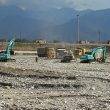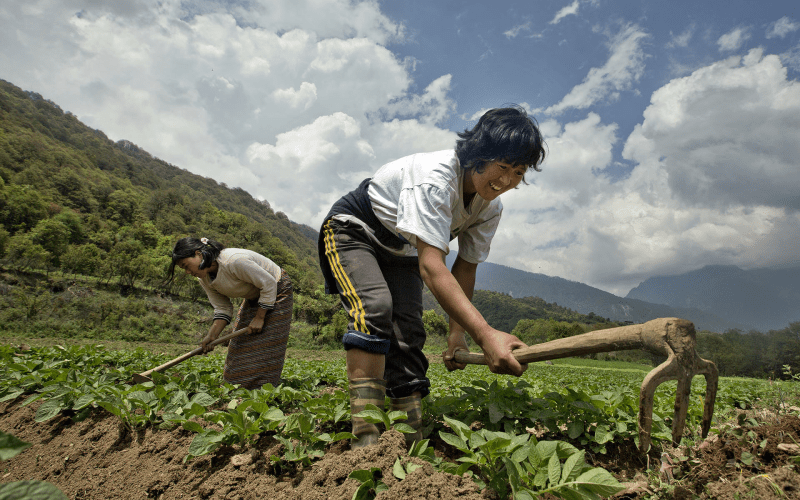Bhutan’s agriculture sector, once a beacon of recovery and growth, is now confronting a dire crisis that threatens the nation’s food security and foreign exchange reserves. Since a period of rejuvenation began in 2009, the sector has suffered a steep decline since 2017, casting a shadow over its critical role in providing food and earning foreign exchange.
The area sown with crops has drastically decreased by 57% from 204,728 acres in 2017 to 89,490 acres in 2023. This translates to an annual loss of about 11,500 acres of arable land. Consequently, a significant portion of cultivable land remains fallow. This reduction in sown area has not been counterbalanced by productivity gains, leading to a sharp decline in cereal production. Paddy output has plummeted by 53%, while maize, wheat, barley, buckwheat, and millet production has fallen by 70-80%. Despite efforts in technological advancements, yield improvements have been elusive, exacerbating the crisis.
The drop in cereal production is mirrored by declines across various agricultural products. Vegetable production has decreased by 61%, potatoes by 34%, and spices, pulses, and oilseeds by 50-70%. Fruit production also fell by 22%. These declines indicate a broader, troubling trend in Bhutan’s agriculture.
Livestock production has not been immune to these challenges. All major livestock products, including milk, butter, cheese, honey, and eggs, have seen declines since 2017, with the livestock population itself dwindling. This reduction poses a long-term threat to mixed farming systems and overall food availability.
The economic impact of these declines is significant. Agriculture exports have decreased from Nu 2.85 billion in 2017 to Nu 2.5 billion in 2023, while imports have surged from Nu 7.8 billion to Nu 13.3 billion over the same period. The sector’s failure to perform its traditional roles—supplying food and raw materials and generating export revenue—is evident.
Investment in the sector has been inadequate despite efforts to increase public and priority lending. The infrastructure, particularly irrigation, remains insufficient. According to the National Irrigation Master Plan 2016, only 64,000 of 200,000 acres of arable land are under assured irrigation. Reports of water shortages and disputes among farmers highlight the urgency of addressing this issue.
The agricultural sector’s institutional framework also poses challenges. With 75% of farmers being marginal (owning less than 2 acres) and 16% small (owning 2-5 acres), the prevalence of subsistence farming limits technological advancements and makes farmers vulnerable to price fluctuations. This volatility undermines the financial stability of smallholders, compounding the sector’s distress.
To address these challenges, Bhutan needs to prioritize agriculture in terms of resource allocation and institutional reforms. Re-establishing the primacy of cereals in the agricultural system is essential for reducing import bills and enhancing food security. Although promoting high-value crops is beneficial, it should not undermine cereal production.
Promoting cooperative or collective farming can help leverage economies of scale and technological advancements. Increased public expenditure on irrigation and improved risk coverage for vulnerable agricultural activities are also crucial.
The government’s Economic Stimulus Plan (ESP) has begun to tackle these issues, with noteworthy aspects including price support for farmers and infrastructure improvements. However, lessons from India’s experience with minimum support prices suggest the need for a cautious approach. Expanding the irrigation network, enhancing credit access, and incorporating migrant labor into agriculture are vital to reviving the sector.
Urgent action is required to stem the tide of decline and ensure the future stability of Bhutan’s agriculture sector. The time for a decisive response is now, as the sector’s challenges continue to intensify.








